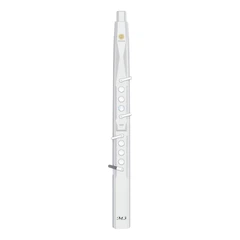The electric clarinet and the traditional (ordinary) clarinet differ primarily in terms of sound production, technology, and versatility. Here are the main differences:
Sound Production:
Traditional Clarinet: Produces sound through the vibration of air within the instrument, initiated by blowing into the mouthpiece and directed over a reed.
Electric Clarinet: Generates sound electronically, using sensors to detect breath and finger movements, which are then translated into MIDI signals or digital audio.
Material and Construction:
Traditional Clarinet: Made from materials like wood, plastic, or metal, with a focus on the acoustic properties of the materials.
Electric Clarinet: Often made with materials that prioritize durability and resistance to changes in temperature and humidity, as they do not rely on acoustic properties. The plastic components and housing are typically manufactured through precision injection molding service to ensure consistent quality and proper fitting of electronic sensors and components.
MIDI Capability:
Traditional Clarinet: Does not have MIDI capabilities and cannot directly control electronic sound generation without additional equipment.
Electric Clarinet: Functions as a MIDI controller, allowing it to send MIDI signals to external devices or software for sound production.
Versatility of Sounds:
Traditional Clarinet: Limited to the natural sound of the clarinet, though different types of clarinets (e.g., Bb, A, bass clarinet) offer variations.
Electric Clarinet: Can emulate a wide range of sounds, including other wind instruments, strings, synth sounds, and more, by connecting to different sound sources.
Portability and Setup:
Traditional Clarinet: Relatively simple to transport and set up, requiring only the instrument and possibly a music stand.
Electric Clarinet: May require additional equipment like a sound module, amplifier, or DAW for sound output, but offers the advantage of silent practice with headphones.
Maintenance:
Traditional Clarinet: Requires regular maintenance, including cleaning the mouthpiece, changing reeds, and occasional repairs or adjustments.
Electric Clarinet: Generally requires less maintenance, as there are no reeds or moving parts that can wear out, but electronic components may need occasional servicing.
Learning Curve:
Traditional Clarinet: Learning to play involves mastering embouchure, breath control, and finger technique, which can be challenging.
Electric Clarinet: May have a different learning curve due to the electronic interface and the absence of a reed, but the fingering remains similar.
Cost:
Traditional Clarinet: Prices can vary widely, from student models to professional instruments, with maintenance costs adding over time.
Electric Clarinet: Often comes at a higher initial cost due to the technology involved, but may have lower ongoing costs without the need for reeds or frequent repairs.
Performance Opportunities:
Traditional Clarinet: Commonly used in orchestras, chamber music, jazz, and solo performances.
Electric Clarinet: Suitable for genres like electronic music, pop, and experimental music, as well as traditional settings when an unconventional sound is desired.
Environmental Impact:
Traditional Clarinet: Made from natural materials and does not require power sources for playing.
Electric Clarinet: May require batteries or external power, which can have an environmental impact, but also offers the advantage of not using natural resources like wood.
In summary, the electric clarinet offers a blend of traditional playing techniques with modern electronic capabilities, providing musicians with a versatile tool that can be used in a variety of musical contexts. The traditional clarinet, on the other hand, offers the classic acoustic experience and is a staple in many forms of music.
SUNRISE MELODY M1 electric clarinet wind instrument -- The good news for beginners
For beginners, the SUNRISE MELODY M1 electronic wind instrument is an ideal choice. Unlike traditional musical instruments that require long-term basic practice and complex skill accumulation, even if you have no musical foundation at all, you can master the basic playing methods and play wonderful notes in a short time.



